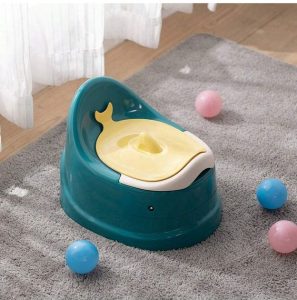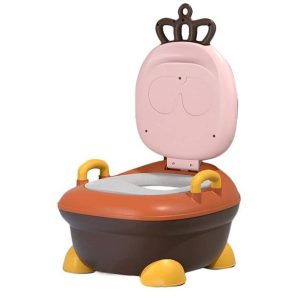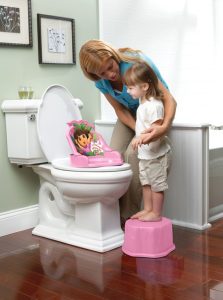Toilet training is a journey filled with milestones and, sometimes, messes. The timer method is a popular technique that can help toddlers establish a routine and build awareness of their bodily functions. Let’s explore how the timer method works and how you can implement it in your toilet training journey.
Understanding the Timer Method
The timer method involves setting a timer at regular intervals throughout the day and prompting your child to use the potty at those times. Here’s a basic breakdown:
Set a Timer:
Choose a timer interval that works for your child and schedule. Start with shorter intervals, like 20 minutes, and gradually increase them as your child progresses.
Potty Time Prompt:
When the timer goes off, gently remind your child it’s potty time. Use positive language and avoid pressure or force.
Relaxed Atmosphere:
Create a calm and relaxed environment in the bathroom. Let your child sit on the potty for a few minutes, even if they don’t go.
Positive Reinforcement:
Celebrate successes with praise and encouragement, regardless of whether your child uses the potty.
Remember: The timer method is a tool to create a routine and encourage awareness. It’s not about forcing your child to use the potty.
Benefits of the Timer Method
The timer method offers several benefits for toilet training:
Promotes Routine: Regular potty breaks become part of your child’s day, helping them anticipate toileting needs.
Encourages Awareness: The timer prompts help your child connect the feeling of needing to go with using the potty.
Provides Positive Reinforcement: Celebrating attempts and successes builds confidence and motivates your child.
Reduces Accidents: Frequent potty breaks can help prevent accidents by offering opportunities to use the toilet.
Consider these benefits when deciding if the timer method might be a good fit for your toilet training journey.
Getting Started with the Timer Method
Here are some steps to get you started with the timer method:
Choose the Right Time: Pick a time when you can be present and available to support your child during potty attempts.
Set Realistic Intervals: Start with short intervals that you can gradually lengthen as your child gains bladder control.
Positive and Encouraging: Maintain a positive and encouraging attitude throughout the process.
Focus on the Journey: Remember, toilet training takes time. Focus on the progress your child is making, not just the end goal.
Adapt as Needed: There’s no one-size-fits-all approach. Be flexible and adjust the timer method to fit your child’s individual needs and progress.
These steps can help you implement the timer method effectively during toilet training.
The Timer Method is One Piece of the Puzzle
The timer method is a valuable tool, but it’s not the only factor in successful toilet training. Here are some additional considerations:
Developmental Readiness: Wait until your child shows signs of physical and behavioral readiness for toilet training.
Positive Reinforcement: Focus on praise and encouragement throughout the process.
Be Patient: Accidents happen. Stay patient and offer support as your child learns.
Consistency is Key: Maintain a consistent routine and approach to toilet training.
Talk to Your Pediatrician: If you have any concerns or questions, consult your pediatrician for guidance.
Remember, toilet training is a team effort. By using the timer method alongside other strategies, you can create a positive and successful experience for you and your child.
The timer method can be a helpful tool to introduce routine and encourage awareness during toilet training. Remember, it’s one part of the journey. Focus on creating a positive and supportive environment, celebrate progress, and be patient with your child.

Making Potty Time Appealing
Create a positive and relaxed atmosphere around potty time. Here are some ideas:
Decorate the Bathroom: Decorate the bathroom with fun and colorful decorations to make it more inviting for your child.
Choose Fun Potties: Let your child choose a brightly colored potty seat or sticker chart to add a fun element.
Read Potty-Training Books: Read age-appropriate books about potty training together. This can help introduce the concept and answer questions your child might have.
Sing Songs and Play Games: Sing songs or play short games while your child sits on the potty. Keep it light and positive.
By making potty time enjoyable, you can encourage your child to participate and be more receptive to using the potty.
Responding to Accidents
Accidents are inevitable during toilet training. Here’s how to handle them:
Stay Calm: Avoid getting frustrated or scolding your child. Accidents happen, and it’s part of the learning process.
Clean Up Together: Involve your child in the cleanup process in an age-appropriate way. This can help them associate using the potty with hygiene.
Offer Positive Reinforcement: Even if your child doesn’t go in the potty, praise them for trying or for letting you know they had an accident.
Focus on positive reinforcement and teaching moments rather than punishment when accidents occur.

When to Adjust the Timer
The timer method is meant to be flexible. Here’s how to adjust it based on your child’s progress:
Shorten Intervals: If your child is having frequent accidents, shorten the timer intervals to offer more potty breaks.
Lengthen Intervals: As your child gains bladder control and has successful potty trips, gradually lengthen the timer intervals.
Read Your Child’s Cues: Pay attention to your child’s cues, like fidgeting or grabbing their diaper, and offer potty breaks even if the timer hasn’t gone off yet.
Be adaptable and adjust the timer method to fit your child’s individual needs and progress.

Additional Strategies for Success
While the timer method can be helpful, toilet training success involves a combination of strategies. Here are some additional tips:
Positive Reinforcement: Praise and celebrate your child’s efforts, regardless of whether they use the potty.
Offer Choices and Independence: Allow your child some choices, like picking out fun underwear or choosing a potty chart.
Be Patient and Consistent: Accidents happen, and progress might not be linear. Stay patient and consistent with your approach.
Make it a Team Effort: Involve other caregivers in the process using consistent language and methods.
Conclusion
The timer method can be a valuable tool to introduce routine and encourage awareness during toilet training. Remember, it’s one part of the journey. By creating a positive and supportive environment, using a variety of strategies, and celebrating progress, you can help your child achieve successful toilet training.







